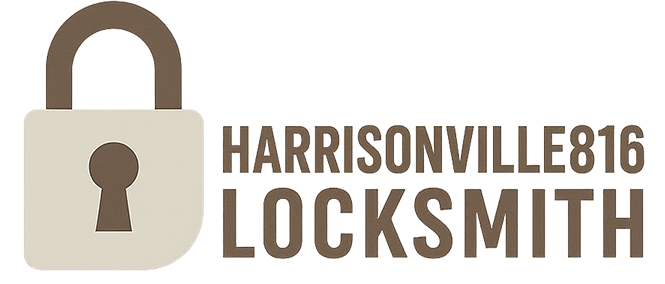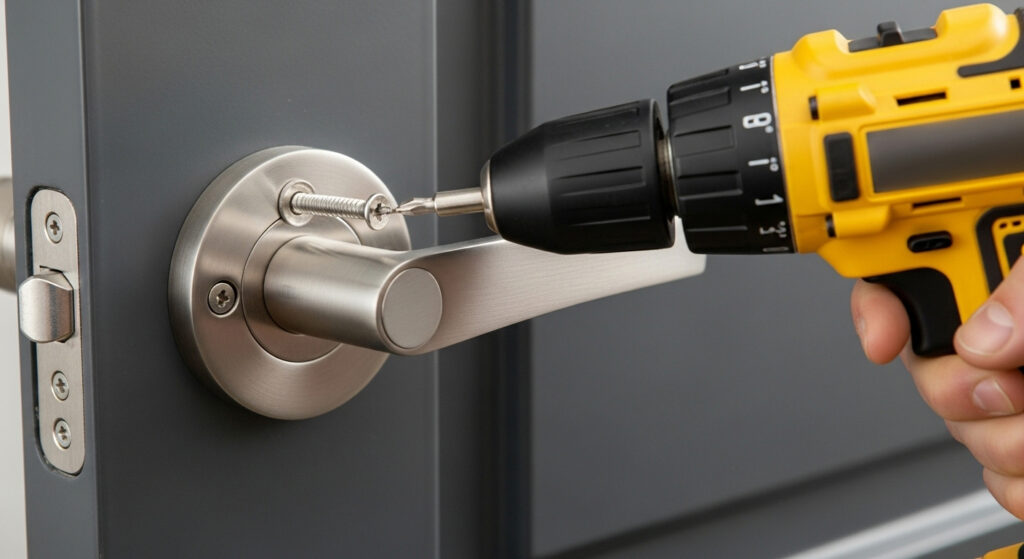Tips for Keeping Track of Multiple Keys
Keys multiply faster than you expect. What starts as a handful for your home or office can quickly become dozens for doors, padlocks, cabinets, vehicles, storage units, and equipment. If you do not create a simple system, keys end up in junk drawers, coat pockets, or unmarked hooks—missing precisely when you need them most. This long-form guide on Tips for Keeping Track of Multiple Keys shows you how to build a clean, scalable routine that prevents loss, saves time, and reduces stress. It is written for homeowners, small businesses, property managers, maintenance teams, and anyone who juggles keys as part of their day.
The core idea is straightforward: every key needs an identity, a home, and a rule for movement. When those three elements are consistent—identity (how you label and categorize), home (where the key lives when not in use), and movement (how you issue and retrieve it)—you eliminate 90% of the frustration that comes with misplaced keys. You will also improve security because you can immediately see which keys are out, who has them, and when they should be back.
Think of your key routine as a tiny logistics system. A good logistics system is visible, predictable, and easy for others to follow. That is important if you share keys with family members, staff, vendors, or tenants. The goal is not a complex software rollout; it is clear labels, smart storage, a brief log, and a few habits you repeat the same way every time. If you later add a digital tool, it attaches to a foundation that already works.
In the pages below, you will find practical steps organized into short, repeatable actions: how to design a numbering scheme, how to use color coding without creating chaos, how to build purpose-based key sets, how to issue and recover keys without nagging, how to choose simple digital helpers, and how to balance convenience with safety. You will also see quick checklists for weekly reconciliation and maintenance, plus suggestions for special cases such as rental turnovers, vehicle fleets, and shared offices.
You can implement this guide in a single afternoon. Start by creating unique codes, labeling a small lockable cabinet, and setting up a one-page checkout log. Then add color rings, reference cards on the key rings, and a weekly five-minute audit. By next week, you will feel the difference. In a month, your process will be second nature. And when someone asks, “Where’s the storage key?”, you will point to a single hook with a confident answer.
Ultimately, Tips for Keeping Track of Multiple Keys is not only about avoiding frantic searches; it is about recovering mental space. When your key system is calm and consistent, you will make fewer emergency trips, damage fewer locks, and stop over-copying keys “just in case.” You will know where everything lives, who has what, and how to get it back—without drama.
Practical Systems & Tools for Keeping Track of Multiple Keys
Use these building blocks to create a lean, dependable routine. Each card below outlines a specific method or tool that slots into your overall system.
Create a Short Numbering Scheme
Assign each lock a short internal code, such as H-101-F for “House, unit 101, front door” or OFF-SRV-1 for “Office, server room, door 1.” Keep the code readable on a small tag and avoid printing full addresses or words like “master.” A compact code improves legibility on labels, makes your log cleaner, and preserves privacy if a tag is ever lost.
Use Consistent Color Coding
Map colors to categories: red for exterior doors, blue for interior office doors, green for storage, yellow for vehicles, orange for padlocks, purple for cabinets. Color rings, caps, and tags help anyone pick the correct set at a glance and return it to the right hook later. Document the color legend inside your cabinet door so new users learn it instantly.
Give Every Key a Labeled Hook or Slot
Install a compact lockable cabinet or drawer organizer with hooks or slots labeled by code. Place a “checked-out” placeholder card on the hook when a key leaves. That way, empty hooks are never ambiguous—you will always know whether a key is missing or legitimately out with someone.
Log Checkouts and Returns—Paper or Digital
Keep a one-page log or shared sheet: date, time, key code, recipient, purpose, expected return, and actual return. The tool you use matters less than consistency. If accuracy is critical, attach QR labels to rings and scan them at checkout to reduce typos and speed reconciliation.
Build Purpose-Based Key Rings
Instead of handing out a fistful of random keys, create small rings by task or role: “maintenance set,” “front-of-house set,” “fleet set.” Each ring uses its own color and includes a laminated reference card listing the codes on that ring and a neutral “If found” phone number for recovery.
Add Simple Digital Helpers
Shared spreadsheets work for most teams. Asset apps add barcodes or QR codes, while Bluetooth finders help locate misplaced rings around a building. For high-turnover doors, consider keypads or cards so you issue fewer physical keys and can revoke access remotely when needed.
Common Challenges When Managing Many Keys
Identifying where friction occurs helps you fix it permanently. These are the most frequent stumbling blocks and how to address them.
-
Unlabeled or Poorly Labeled Keys
Scribbled notes fade and generic tags look identical. Use engraved or printed labels with your short codes. Add color caps to make sets instantly recognizable and update labels the moment they wear out.
-
Keys Without a Fixed Home
Keys drift when cabinets are not labeled or accessible. Establish a single storage location near the main entry or office hub. Mirror your codes on the hooks and post a quick “how to return” note on the door.
-
No Checkout Routine
Without a log, it is impossible to know who has what. Record every handoff, set a due time, and send a friendly reminder the day before a key is expected back. Reconcile once a week so problems never linger.
-
Overloaded Key Rings
Heavy rings are easy to drop and annoying to use. Keep rings light by creating purpose-based sets. Use quick-release hardware to lend a single key to a vendor without dismantling the entire ring.
-
Security Gaps
Labels should help you, not intruders. Do not print addresses, business names, or “master” on tags. Keep the codebook separate from the cabinet and lock the cabinet itself. Store duplicates off-site or in a second locked drawer to avoid a single point of failure.
Why This System Works for Keeping Track of Multiple Keys
The approach below stays effective because it is simple, visible, and easy for others to follow. You are building a habit, not a one-time cleanup.
Clarity Over Complexity
Short codes, obvious colors, and labeled hooks mean you never wonder where a key belongs. Anyone can learn the pattern in minutes, which keeps the system alive when you are not there to oversee it.
Scales as You Grow
Add new locks by extending your code pattern. Because each category already has a color and each hook has a label, expansion does not create confusion.
Built-In Accountability
A simple log makes it natural to bring keys back on time. Weekly reconciliation takes five minutes and prevents small oversights from turning into lost keys or emergency rekeys.
Better Security
By avoiding sensitive information on tags and controlling cabinet access, you reduce exposure if a tag is lost. Off-site duplicates and neutral return messages add another layer of protection.
Put These Tips Into Practice Today
Start with three steps: create short codes, label a lockable cabinet, and set up a one-page log. Add color caps and reference cards to your rings and run a five-minute reconciliation every week. In a few days, you will spend less time searching and more time getting things done.
Step-by-Step: Building Your Key Routine
1) Draft your code map. List every lock you manage, then group them by location or purpose. Assign a two- to eight-character code to each. Keep it short enough to fit on a tag but descriptive enough that you can decipher it later. Post a printed legend inside your cabinet door so others can read it.
2) Prepare storage. Choose a cabinet or drawer organizer with enough hooks/slots for your current inventory plus 25% growth. Label each hook by code. Keep the cabinet in a place that is easy to reach during the workday yet not publicly visible. If you manage a household, mount it where everyone passes it; if you manage an office, place it near the operations hub.
3) Label and color all keys. Use engraved or printed tags. Add color rings that match your category map. If a ring holds multiple categories, use a dominant color for the primary function and list the rest on the reference card.
4) Create purpose-based sets. Maintenance staff should not carry the front-desk ring, and reception should not carry the maintenance ring. Keep rings light and role-specific. Add a laminated reference card with each ring’s codes and a neutral “If found, call” number.
5) Launch your log. Paper works fine, but a shared sheet reduces gaps when multiple people issue keys. Train everyone to record checkouts and returns immediately. If you use QR labels, place the scanner near the cabinet so the habit is painless.
6) Set your reminder rhythm. Use calendar nudges the day before a key is due. For short-term issues (like vendor access), default to same-day return unless a longer window is explicitly approved.
7) Reconcile weekly. Compare the cabinet to the log. Mark overdue items, send reminders, and decide when to rekey if a key does not return. This habit prevents quiet losses and keeps your inventory accurate.
Safety and Privacy Tips When Labeling
Labels must help you—and tell strangers nothing useful. These practices keep information private without making your system cryptic.
Internal Codes Only
Avoid addresses, company names, or department names on tags. If a tag is lost in public, your code should not reveal the location it opens.
Neutral Return Messages
A simple “If found, please call” with a phone number increases your odds of recovery without disclosing the asset or owner.
Separate Codebook
Keep the legend that maps codes to locations stored away from the keys. If someone sees the cabinet, they still cannot decode the system.
Special Cases: Rentals, Fleets, and Shared Spaces
-
Short-Term Rentals
Use keypads or lockboxes for guests and keep physical keys for backup. Between stays, test codes, confirm batteries, and check that the backup key is present. Disposable tags help you refresh labels quickly.
-
Vehicle Fleets
Tie key codes to vehicle numbers and keep fuel cards and registrations in the same labeled pouch. A ring without the paperwork creates a second search later—store them together.
-
Shared Offices
Partition your cabinet by tenant color and issue each tenant a unique checkout log section. This reduces cross-tenant mix-ups and clarifies responsibility if a key goes missing.
Maintenance & Small Habits That Protect Your System
Monthly Hardware Check
Inspect rings, clips, and carabiners for weak springs and cracks. Replace worn parts immediately to avoid drops and accidental loss.
Quarterly Lock Exercise
Test seldom-used locks and refresh lubrication sparingly with a lock-safe product. Smooth cylinders reduce copy wear and prevent stuck keys.
Immediate Label Refresh
When a tag becomes hard to read, replace it that day. Delayed maintenance is the fastest path to mystery keys later.
Off-Site Duplicates
Store at least one duplicate for critical locks in a separate secure place. This prevents a single incident from disabling your access.
Your Next Move
Print your codes, label a cabinet, and set up a single shared log today. Keep rings light, color them by category, and reconcile weekly. With these Tips for Keeping Track of Multiple Keys, you will replace chaos with a routine that anyone can follow—and you will stop asking, “Who had the key last?”

